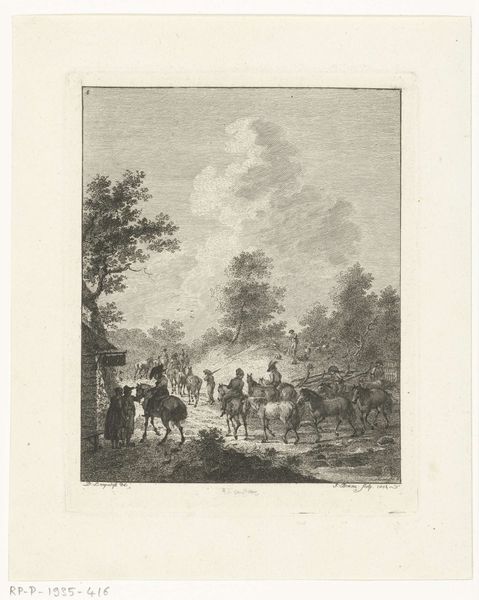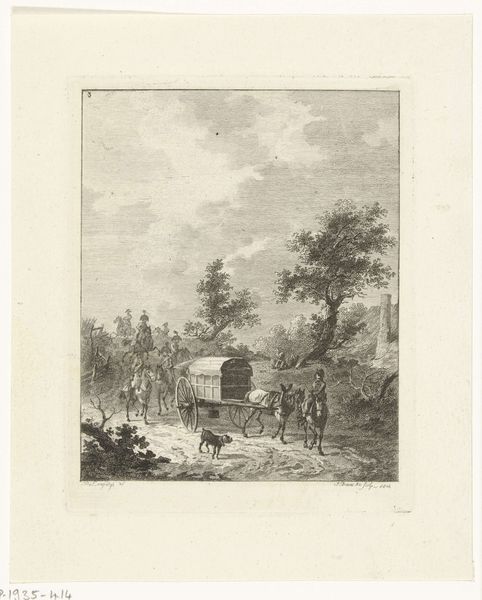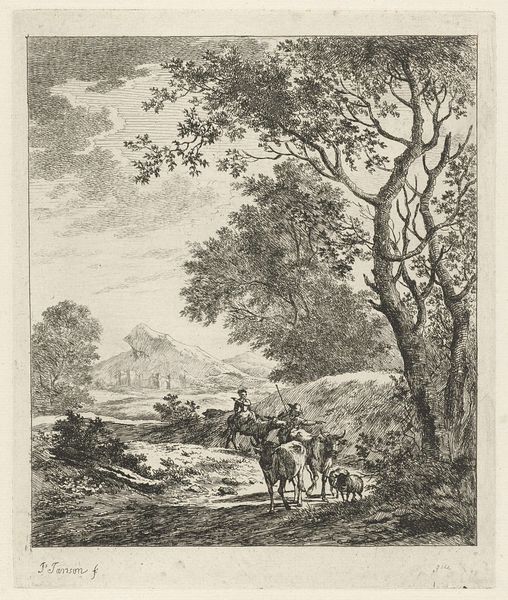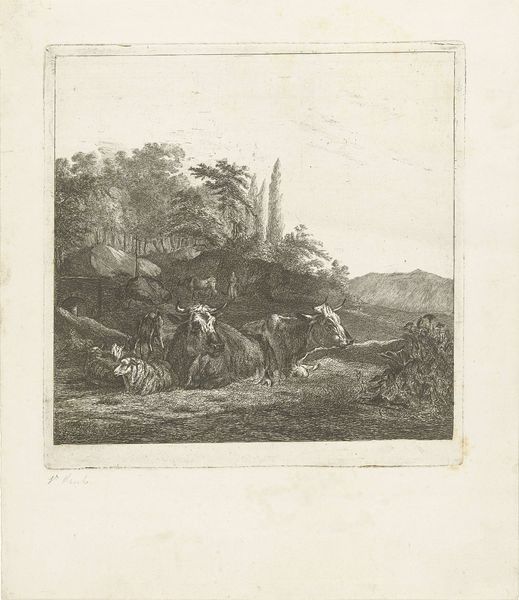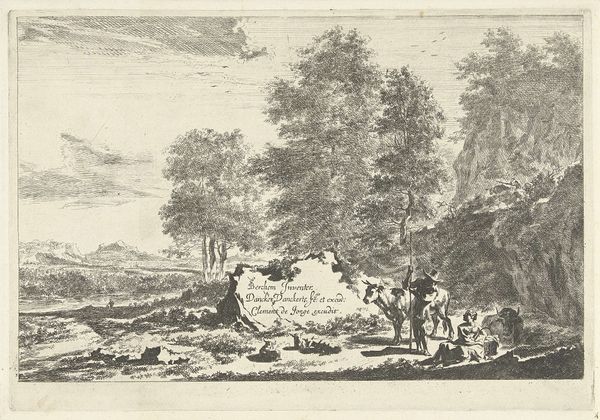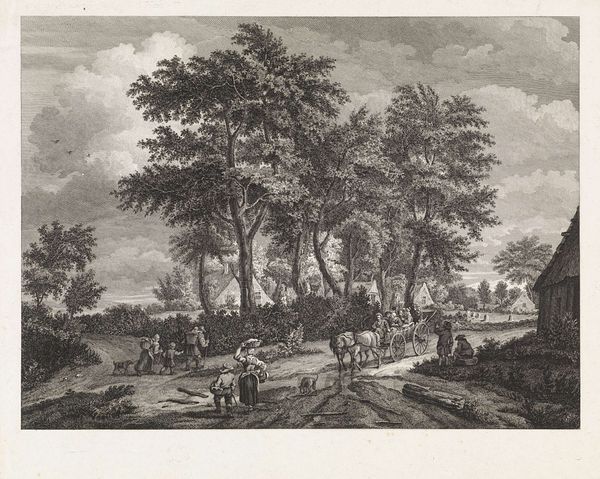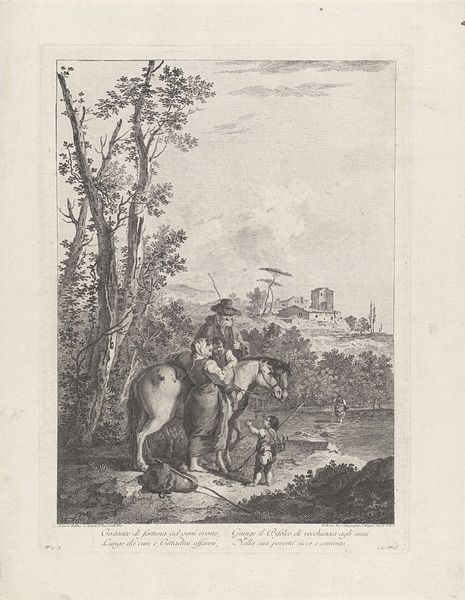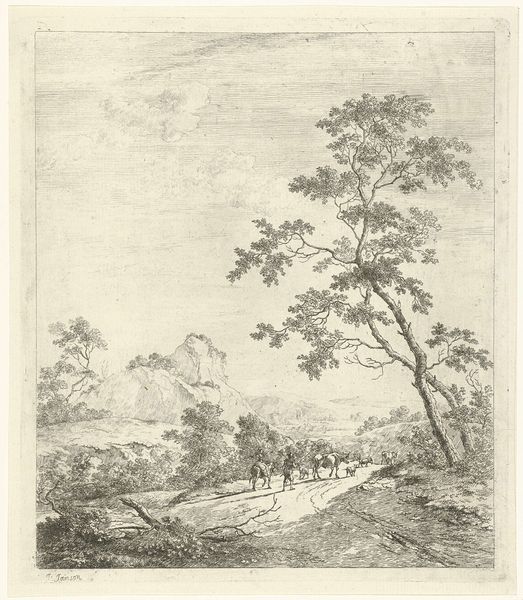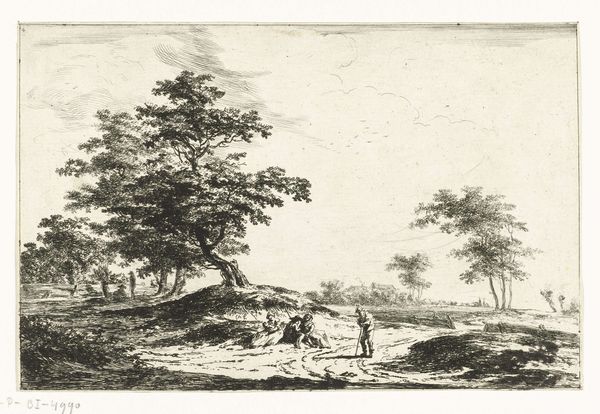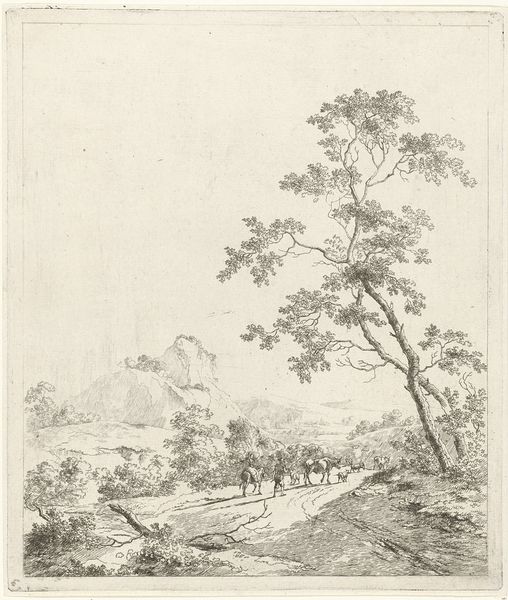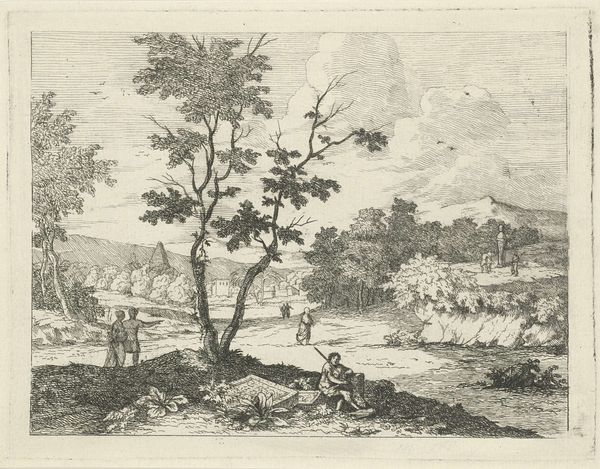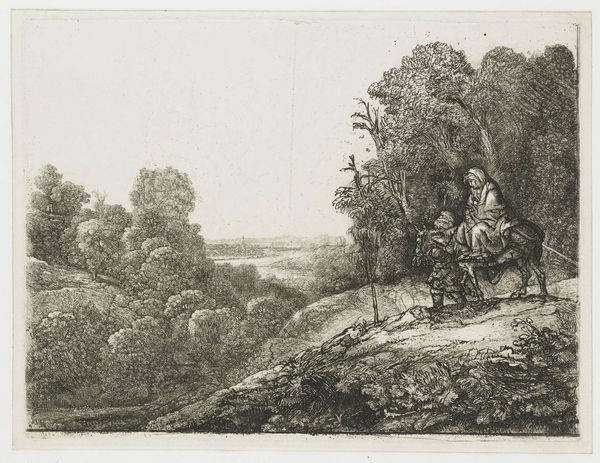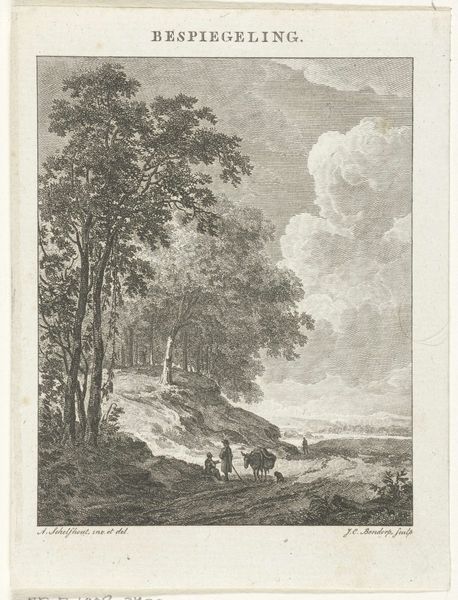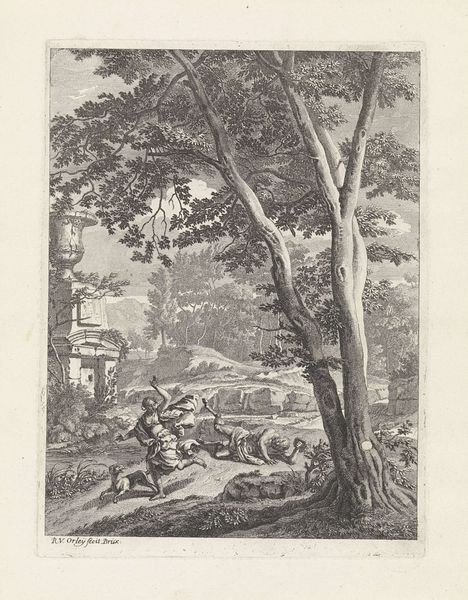
drawing, print, etching, paper, engraving
#
pencil drawn
#
drawing
#
neoclacissism
#
light pencil work
# print
#
etching
#
pencil sketch
#
old engraving style
#
landscape
#
paper
#
pen-ink sketch
#
pencil work
#
genre-painting
#
engraving
Dimensions: height 138 mm, width 110 mm
Copyright: Rijks Museum: Open Domain
Curator: Looking at this detailed print, I'm struck by the artist's rendering of rural life. What catches your eye immediately? Editor: It's the atmosphere, undeniably. The delicate rendering of light creates an overall effect that's both tranquil and nostalgic, like a memory half-faded. The delicate textures bring the hay wain and the foliage to life. Curator: Indeed! This etching from 1803, titled "Hooiwagen die over een brug rijdt", which translates to "Hay Wagon Crossing a Bridge," comes to us from the hand of Joannes Bemme and currently resides in the Rijksmuseum's collection. The piece demonstrates a prevailing interest during that period in documenting scenes of everyday life. Editor: The formal choices also communicate a story. See how the artist uses line to create a sense of depth? It really does pull you into the scene, with the hay wagon dominating the composition's left side, moving towards the right, where figures appear. The bridge provides an important mid-ground. Curator: It's a fascinating blend of Neoclassical sensibilities applied to genre painting. We see this through the careful detail, the idealized forms, but depicting everyday rural life, unlike the historical paintings that were the height of neoclassical. Editor: So, the subject matter subverts the expected use of the technique. Is Bemme subtly democratizing art through this? The elevated rendering technique now given to the quotidian? Curator: Precisely! And consider the role of printmaking itself. It was becoming increasingly accessible. Prints like these broadened access to imagery and arguably challenged established patronage structures. Now, middling classes can participate in art consumption in new ways. Editor: Well, if one is interested in technique, then the light pencil work throughout, combined with precise etching lines, really do create a captivating interplay of light and shadow. Curator: Absolutely. Joannes Bemme's decision to showcase this scene says a great deal about shifting social interests and emerging artistic markets within the Netherlands at the time. Editor: It is tempting to lose oneself in considering how art historical circumstances are at play here. But as a study of composition alone, "Hooiwagen die over een brug rijdt" offers a masterclass in visual storytelling. Curator: A compelling reminder that we cannot separate artistic intention from its cultural moment, can we?
Comments
No comments
Be the first to comment and join the conversation on the ultimate creative platform.
